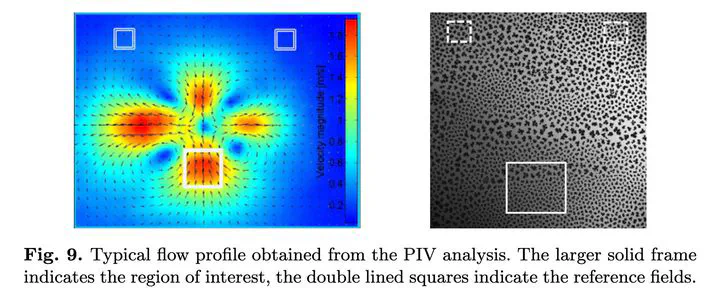Transport at Interfaces in Lipid Membranes and Enantiomer Separation
Jul 14, 2017·,, ,,,,,,·
0 min read
,,,,,,·
0 min read
Oleg Boyarkin
Stefan Burger
Thomas Franke
Dr. Thomas Fraunholz
Ronald H. W. Hoppe
Simon Kirschler
Kevin Lindner
Malte A. Peter
Florian Strobl
Achim Wixforth

Abstract
We study the dynamics and formation of differently ordered lateral phases of interfacial lipid layers for two types of lipid systems, a vesicle-supported bilayer and a Langmuir–Blodgett monolayer, both in experiment and by simulation. Similarly, we investigate the dynamics of objects embedded in a simpler interface given by an air–water surface and demonstrate the surface-acoustic-wave-actuated separation of enantiomers (chiral objects) on the surface of the carrier fluid. It turns out that the dynamics and the separation of the phases do not only depend on parameters such as temperature, mobilities and line tension but also on the mechanics of the lipid layers subjected to exterior forces as, for instance, compression, extensional and shear forces in film-balance experiments. Since the mechanical behavior of lipid layers is viscoelastic, we use a modeling approach based on the incompressible Navier–Stokes equations with a viscoelastic stress term and a capillary term, a convective Jeffrey (Oldroyd) equation of viscoelasticity, and the Cahn–Hilliard equation with a transport term. The numerical simulations are based on C0-interior-penalty discontinuous-Galerkin methods for the Cahn–Hilliard equation. Model-validation results and the verification of the simulation results by experimental data are presented. The feasibility of enantiomer separation by surface-acoustic-wave-generated vorticity patterns is shown both experimentally and through numerical simulations. This technique is cost-effective and provides an extremely high time resolution of the dynamics of the separation process compared to more traditional approaches. The experimental setup is an enhanced Langmuir–Blodgett film balance with a surface-acoustic-wave-generated vorticity pattern of the fluid, where model enantiomers (custom-made photoresist particles) float on the surface of the carrier fluid. For the simulations, we propose a finite element immersed boundary method (FEIBM) for deformable enantiomers and a fictitious-domain approach based on a distributed Lagrangian multiplier finite element immersed boundary method (DLM-FEIBM) for rigid chiral objects, both of which lead to simulation results consistent with experiments.
Type
Publication
Advances in Mathematical Fluid Mechanics